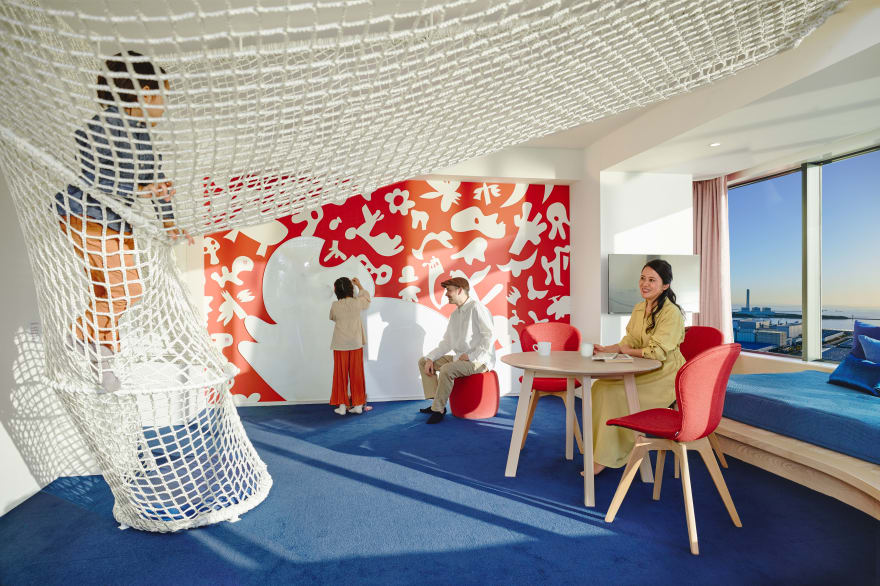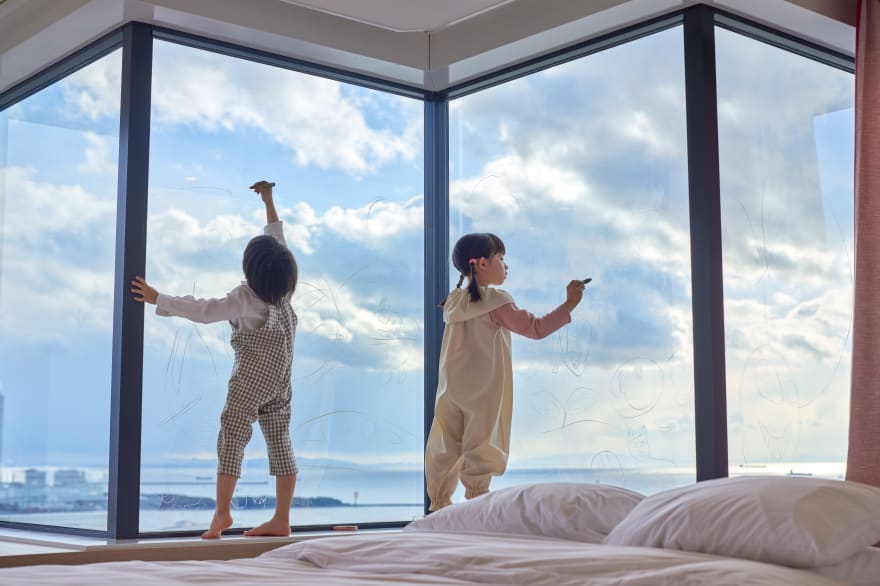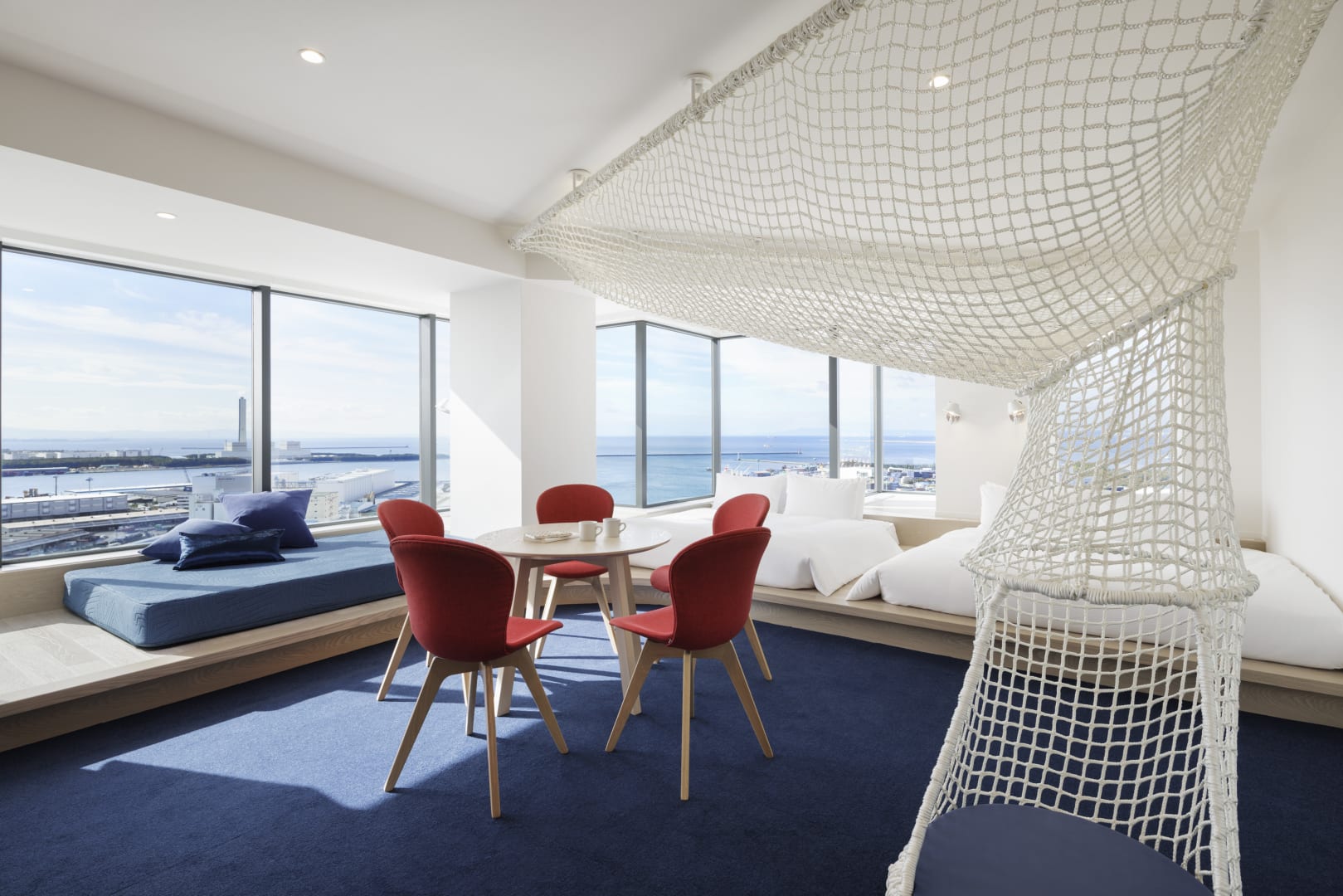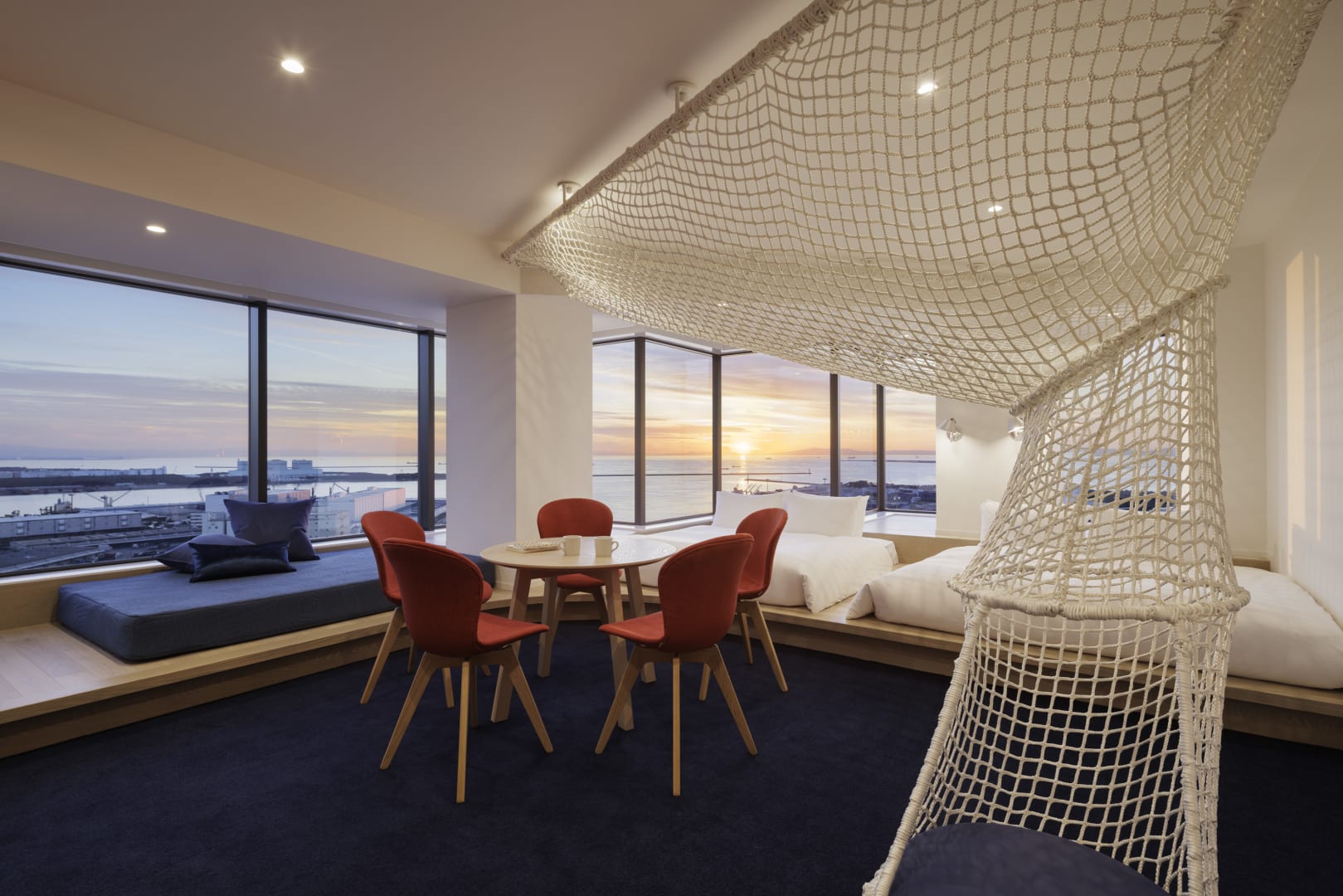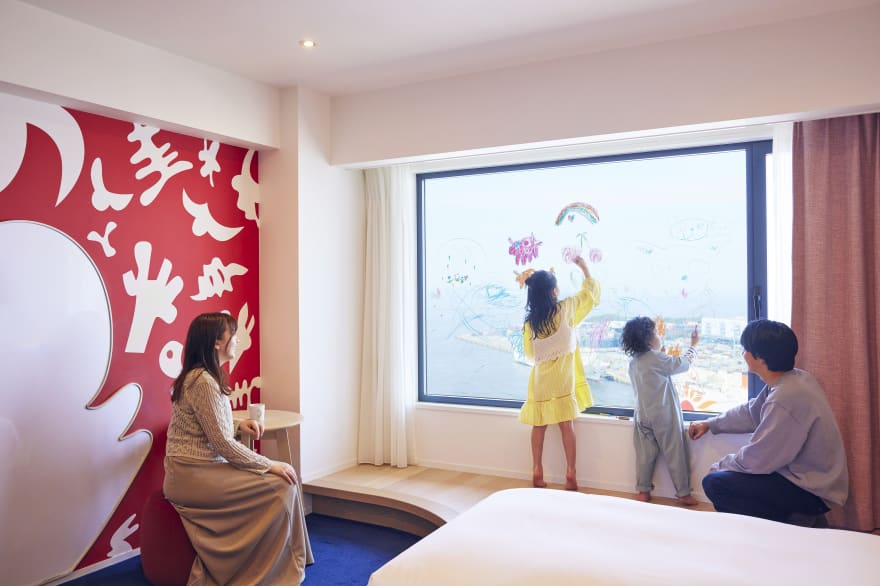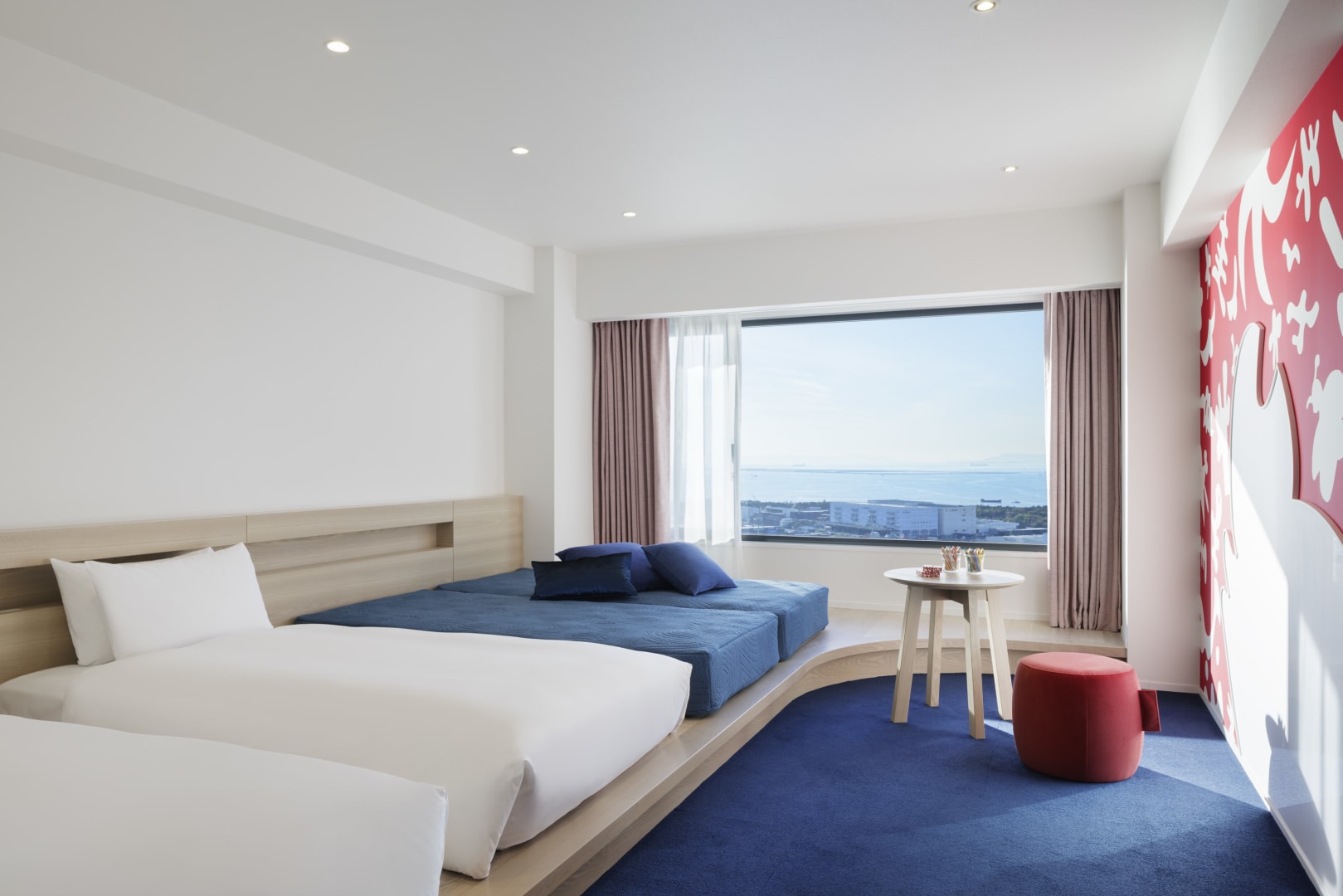Atelier Room Deluxe
- 1–5 Guests
- 80m²
- Special room
It is a room where you can climb and lie on a net stretched from the ceiling and play with your body.
Beds
- 203cm×180cmKing size (2 people)
- 203cm×180cmKing size (2 people)
- 200cm×123cmSemi-double size (1 person)
Wi-Fi
All guest rooms, common area (free of charge)Room Amenities
Reading light, Humidifier, TV, Electric kettle, Refrigerator, Safe, Locker, Pajamas, Toothbrush, Bath amenities, Face lotion, Towels, Hairdryer, Hanger, Slippers
Bathroom
Double bathroom sink, Bathtub, Shower, Shower booth, Separate WC, Bathroom sink, Toilet: Washlet, Makeup area,Bed share
Up to the same number as the room capacity, children under the age of 5 can sleep together (No bed and pajamas, and no bedding, including Atelier use). Children under the age of 5 who share a bed with should register as "1 -5 years old/co-sleeping."General
•Amenities provided at the Lobby: we does not provide plastic amenities for guests. The following amenities are provided at the front desk.
* Cotton swabs, cotton pads, hair rubbers, hairbrushes, shavers, hair caps
•Shoes are prohibited in all rooms, and smoking is prohibited (including heated tobacco and e-cigarettes). Smoking is allowed only in the designated area (next to the main entrance of Grand Prince Hotel Osaka Bay).


